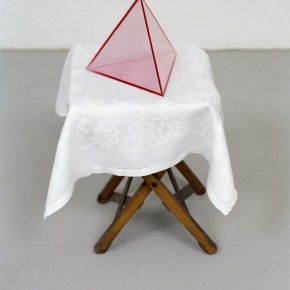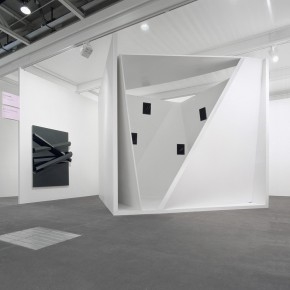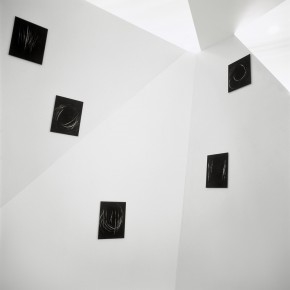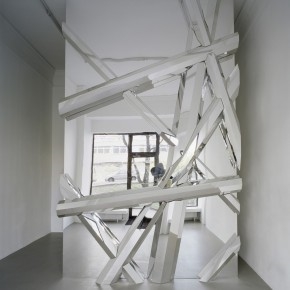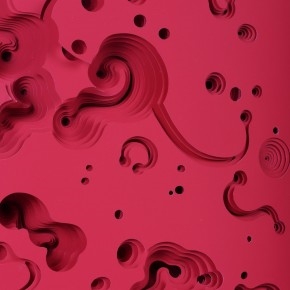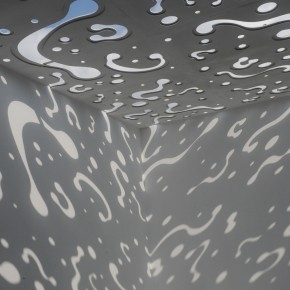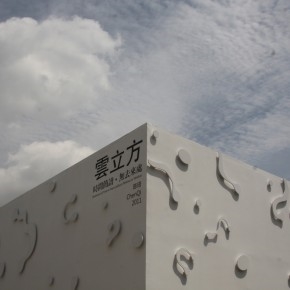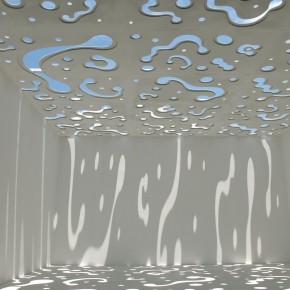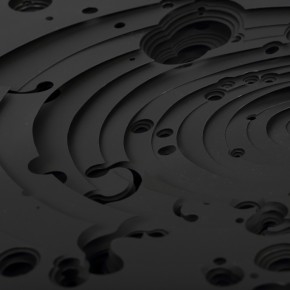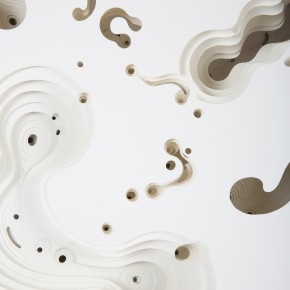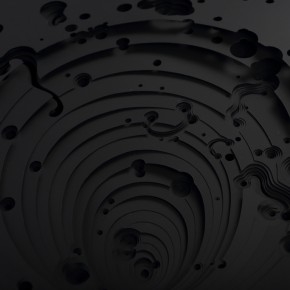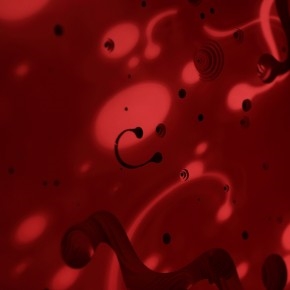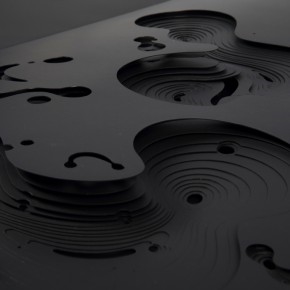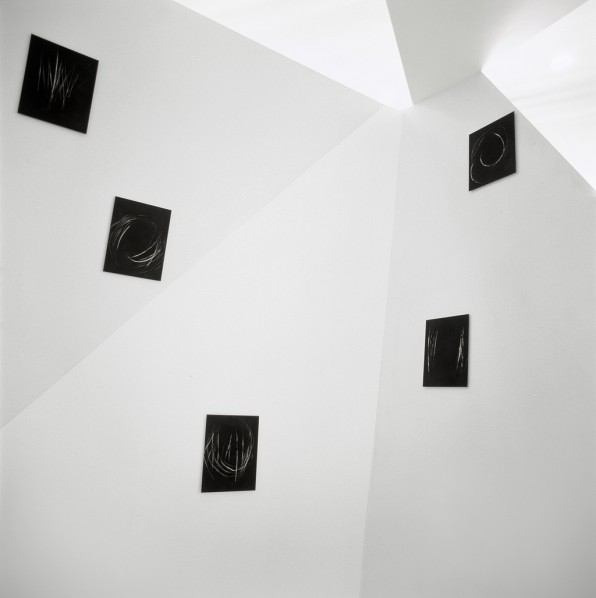
Dieter Detzner's Installation at Basel 04
Ever since 1980s, artist Chen Qi(1963-) has unhesitatingly chosen the woodblock printing which has a profound heritage as his medium of artistic expression. In the long artistic practice, he combines the ideas concerning lighting of sketch layers in western painting while extending the artistic confinement of traditional woodblock by Chinese ink and wash painting as well as modernism, thus he greatly enhance the contemporary performance of woodblock printing.
Dieter Detzner( born 1970) is an artists who lives and works in Berlin. His sculpture installations operate like models representing personalized ideas of spaces. Although using industrial acryl glass and applying a vocabulary of rational forms, the artist manually constructs the objects, grinds and glues the edges himself.
Dieter Detzner was invited to visit China in late May, which provided a rare opportunity for these two artists to talk about art at the Central Academy of Fine Arts.
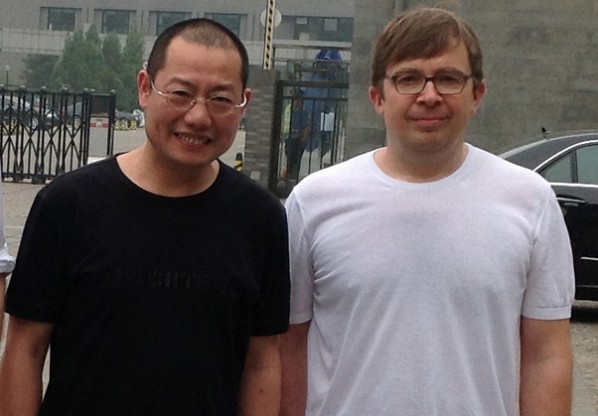
Chen Qi and Dieter Detzner stood in front of the Gate of the Central Academy of Fine Arts
Chen Qi: At this visit to China you were visiting China Central Academy of Fine Arts, the Bejing 798 art district and some artist groups. You were also in contact with some artists. Could you tell us about your direct impressions?
Dieter Detzner: First of all, I would like to express my thanks for the incredibly warm and friendly welcome I’ve received from all institutions I visited, especially CAFA and the artists I met in China. I was very pleasantly surprised by the great interest in my work and the openness of the artists reminded me of the same positive, forward-looking atmosphere I was lucky to witness in Berlin in the 1990s.
I was very interested to observe the evident confrontation in young Chinese artists between traditional Chinese art and contemporary Western art. This is a very exciting combination for me.
I was especially happy to visit you, Professor Chen, and talk with you about your work. I feel a great closeness between our work and think that perhaps we have a similar approach to art.
Chen Qi: Why did you choose lithography and sculpture as your artistic form of expression? What is the theme of your lithographs and sculptures? What is in your opinion the main factor to create a good lithographic work or good sculpture?
Dieter Detzner: From the beginning I’ve worked with a lot of different media but what is common to all works is the confrontation with space. Very early, even when I visited the Louvre in Paris before my art studies, I came to the conclusion that all art fundamentally relates to space. There in the hall of the French Romanticism in front of the paintings of Géricault and Delacroix I was aware of the images’ enormous spatial effect. Later, this view was again strengthened by my encounter with the work of Joseph Beuys.
So I would describe the organization of space as my basic theme which runs through all my work regardless of media: photography, lithography or sculpture.
The process of creating a good work of art is in my opinion proceeded by a substantive examination of the theme of the work, and as a basis an accurate knowledge of the history of art and craftsmanship should also be present.
Chen Qi: When we look at your work for the first time, they seem very rational to us as if they were the result of careful and precise calculation in a physics laboratory. Can you tell us about your artistic ideas?
Dieter Detzner: I am always interested to hear about new scientific findings - as far as I can understand them - as well as developments in the technology, including of course architecture. In my opinion art has always been able to create links between these disciplines, especially when one thinks of universal artists such as Leonardo da Vinci. And one sees quite clearly that common to all disciplines, both art and science, is the search for explanatory models of being.
I try to illustrate this in my work by incorporating very rational, geometric shapes. I construct my sculptures first in the computer with a CAD program that is used by architects and calculates the angles and dimensions.
On the other hand, a cosmic counterpoint to this idea is my strong in the very opposite to the idea to rationality: the idea of the chaotic disorder and unconscious.
Since modernity there are these two strong currents in contemporary western art. The abstract and the expressionist – which certainly branch out into many undercurrents. I have always been interested in both currents and like to try to combine them. For example, I threw acrylic-resin paint over Styrofoam sheets, resulting in shapes of the "splashes" This initial act of throwing is a very spontaneous, fast act. However I then cut out the resulting shapes very methodically using a hot-wire, a long process over several days in which deliberate decisions of what to cut and what to keep must also be made over again. In my recent work I bring the two ideas of chaos and rationality together by making drawings in fire and soot using chance processes and then encasing these incredibly fragile resulting works under acrylic glass cases made in geometric forms.
Chen Qi: I noticed the use of space in your art works, for example, you added to a flat painting three-dimensional objects, or you pave the spatial environment through the use of mirrors. Are you fascinated by this spatial transformation? Why?
Dieter Detzner: As I mentioned earlier, I believe all artistic works have an essential spatial reference. In particular I am interested in the perception of the self in space, and the space in the self. The viewer first notices the work but then – notices his or herself. This creates a relationship between work and viewer and a mental process within the viewer is initiated. If my art can achieve this then I am very happy.
Chen Qi: Your work seems to be minimalistic. It creates a lot of room for different ideas. What is the main reason therefore?
Dieter Detzner: Reduction means concentration. Concentration means "towards the center". For the viewer minimal means great freedom. Freedom to focus on oneself. The ambition is to reduce to the point of complete dissolution. NOTHING.
Chen Qi: What is your daily creative process like? What changes did your style during the years experience? Have you ever experienced a creative jam?
Dieter Detzner: I work very systematically every day in the studio. Over the years I've gotten more and more into a routine which gives me security. Of course, I have also often experienced a creative block and in order to develop new ideas, I must then always question and break with routine. This is the field of turbulence in which creativity arises.
Chen Qi: What is contemporary Western art most engaged in, your work included ?
Dieter Detzner: My observation is that dealing with the already-seen is very important for contemporary Western art – but it’s not easy or even possible to answer this question in general - because each artist probably has his or her own answer. A shorter answer would be: It tries to deal with itself in a contemporary way.
Chen Qi: How do you understand the relationship between yourself and the art? What does art mean to you?
Dieter Detzner: Art gives me the opportunity to constantly deal with myself and my surroundings and to develop works that carry these thoughts. I have the opportunity to develop myself further in art. Art is omnipresent for me.
Chen Qi: In simple words as possible, please describe the differences and similarities between Chinese contemporary art and western (german) contemporary art.
Dieter Detzner: Chinese and Western art have influenced each other for a long time. For example, the Impressionists were very much inspired by Chinese painting including Van Gogh, who even copied Chinese paintings. One of the most popular media for the Expressionists was the woodcut, which they inherited from Chinese arts. In return, contemporary Western painting has certainly influenced contemporary Chinese painting.
The art of the two regions has certainly undergone very different stories. However, I believe that for both it comes to the same thing: to search for explanations for being.
Chen Qi: Will you visit China again? What is your next art project?
Dieter Detzner: I plan to travel to China very soon to continue to deepen the artistic exchange.
First, I would be very happy to continue the conversation with you, Professor Chen, about our work and to learn more about Chinese art in general.
Secondly, I would like to convey to students at CAFA more about the development of the understanding of space in the European and especially German art. I imagine that this could take the form of lectures as well as discussions in relation to individual student’s work.
A goal of mine is also to exhibit my artwork in China. Currently I am working on a project with old litho stones and contemporary reprints of their historical motifs. For the autumn I plan an exhibition of that work here in Berlin.


